Dear friends,
It is the monsoon season and we are currently out every morning and evening, planting, pruning, weeding and developing the ecosystem. Now, the plants have the support of the rains to become established. The time to create a sustainable future has truly come.
We would like to share with you our biggest greening projects of 2020 at Kanha. With a team of hardworking volunteers, including the children of Kanha, we are aspiring to finish four significant projects in the coming months:
The Rainforest Project
The Deccan Plateau Project
The Food Forest Project
The Yatra Garden
The thriving ecosystem at Kanha has been created from scratch on barren land during the last 5 years. And it is fast become a model example of best practices in nurturing India’s mega-biodiversity, saving endangered and rare species, creating medicinal gardens, and allowing all the natural plant and animal wildlife of the region to coexist.
We invite you to join us and be part of this monumental journey of creating a unique, sustainable ecosystem for our future generations.
Your heartfelt contributions to any of the projects above will help us to propagate, plant, and continue to protect many indigenous plant species.
Join us in this ‘Forward into Nature’ movement to reforest our lives.
All the best,
Daaji
Heartfulness Guide
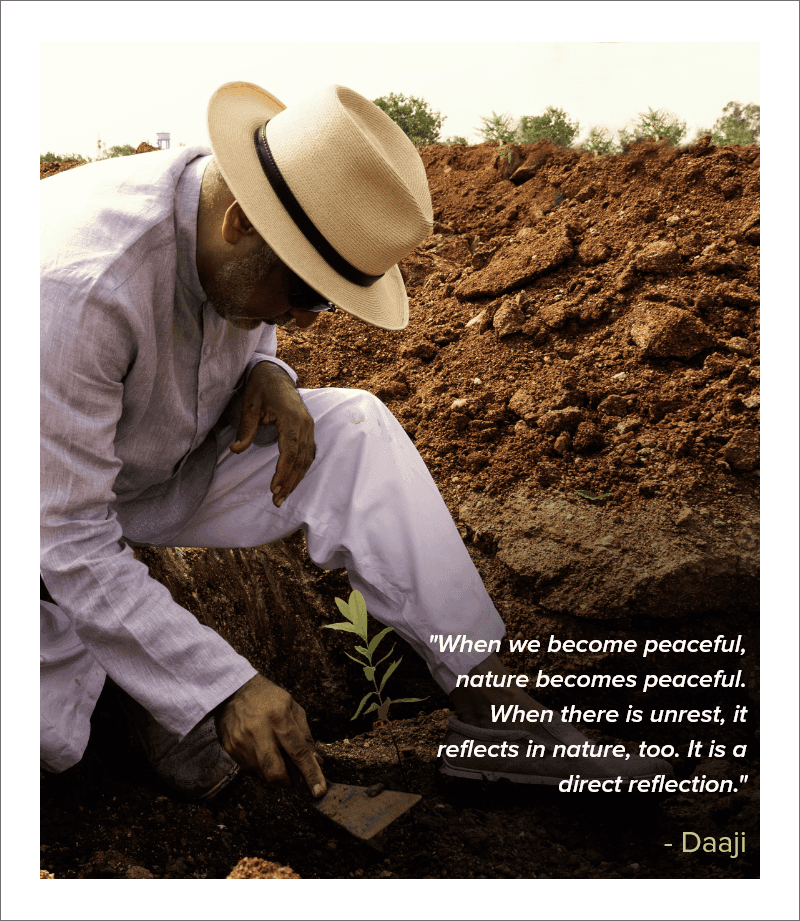
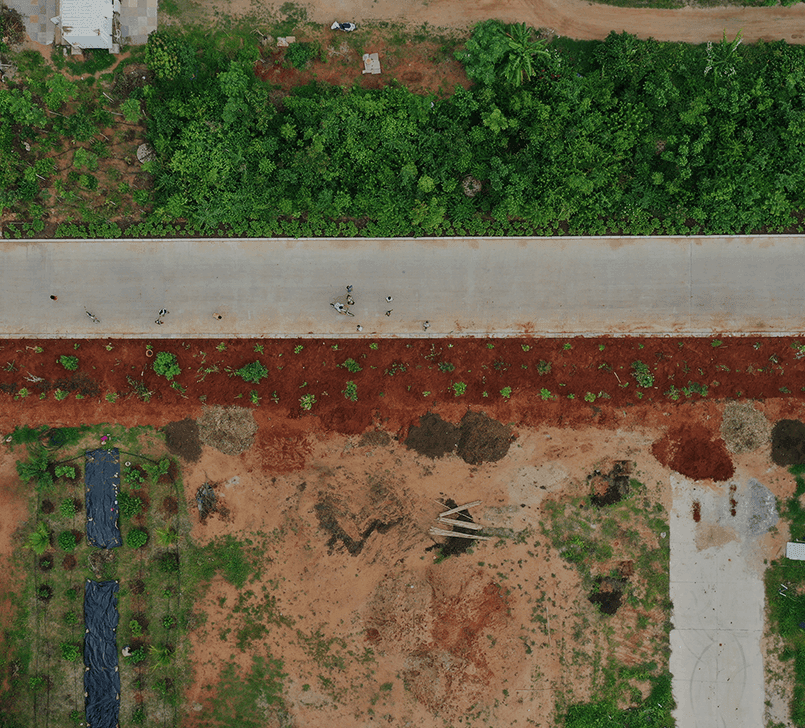
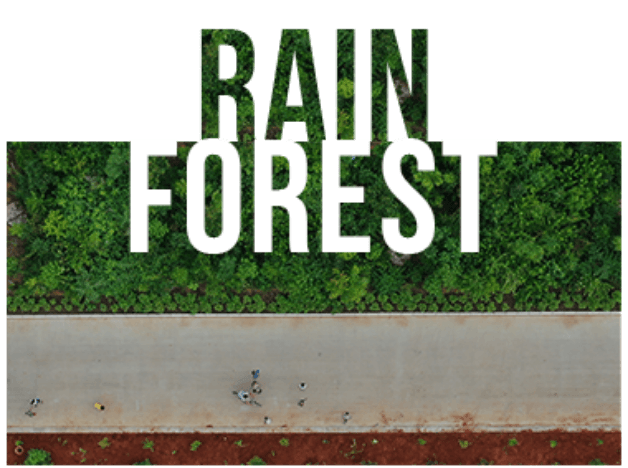

Currently, a quarter of all plant species are endangered, and in India it could be as high as a third. Sadly, we do not have comprehensive information about many of the valuable tree species of India. In the harsh arid conditions of the Deccan Plateau, we have created mini rainforests at Kanha. And this challenging task of growing rainforest species is happening successfully without creating structures made of concrete, steel and glass. It is a miracle in the making.
More than 100 species from the rainforests of the Western Ghats, the Andaman and Nicobar Islands, and North-east India are thriving at Kanha. This is a conservation project, as many of the rainforest species are rare and endangered. Kanha has become a repository of RET plants, like Syzygium travancoricum and Madhuca bourdilonii, which are both greater in number in Kanha than in the wild, as well as Canarium strictum, Opia parviflora, Diospirous, candouliana, Saraca ashoka, Madhuca insignis, Garcenia indica, Myristica malabarica and a host of others.
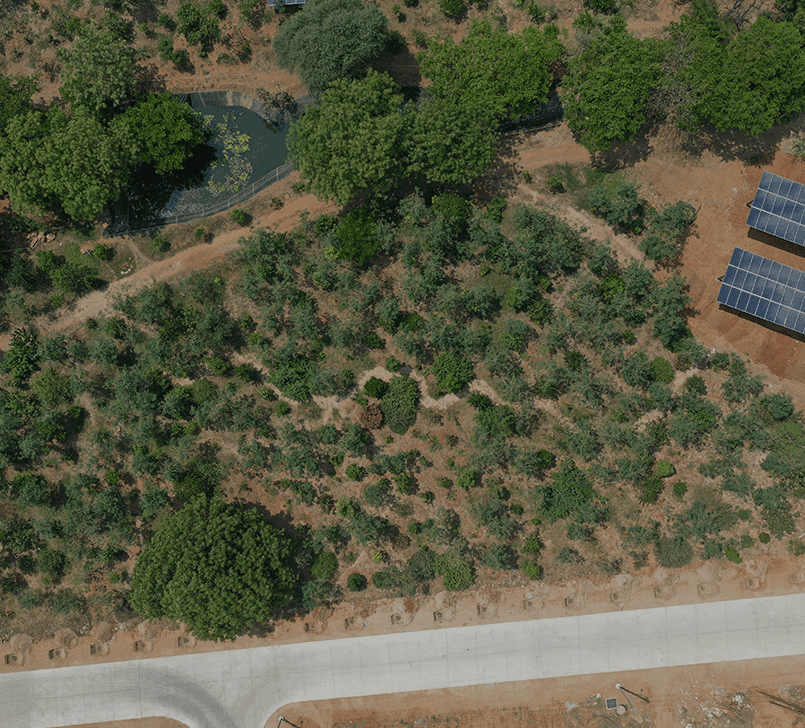
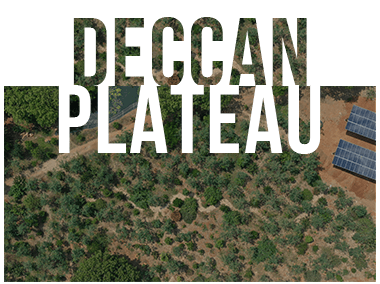

Today, many common species that are considered holy by traditional people are on the verge of extinction. India has a large number of species with very limited natural distribution. For example, the Red Sandalwood (Pterocarpus santalinus) and the Indian Frankincense tree (Boswellia ovalifoliolata) are found in just a few districts of Andhra Pradesh. All the narrow endemic species are threatened with extinction. Greening efforts at Kanha give importance to endemic species, also including the Indian Redwood and the Indian Satinwood, and provide a second home to very rare and threatened species of plants. The initiative will also help to conserve the genetic diversity of the country.
We are developing sacred groves where the names of the plants in English and Sanskrit, their botanical names and their medicinal uses will be displayed, in order to educate visitors. They include gardens of edible wild herbs and shrubs, edible wild fruits and tubers, medicinal plants for primary healthcare and wellness, skincare and haircare. There will also be a sacred grove of species representing the astrological signs. There is a palm grove currently covering 4 acres, a series of ponds hosting water lilies, lotuses and other aquatic plants, and rock gardens featuring the Deccan Plateau’s magnificent rock formations.
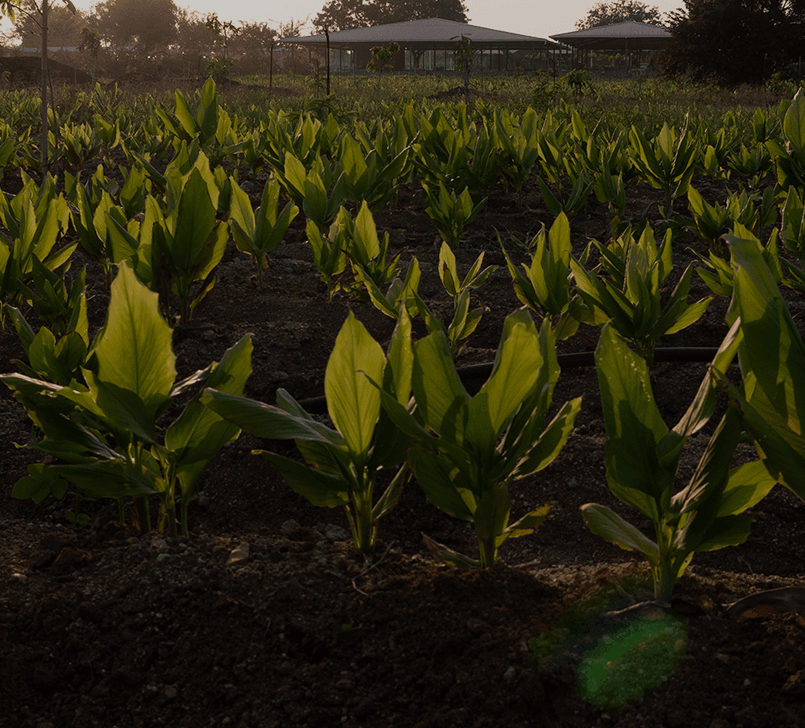
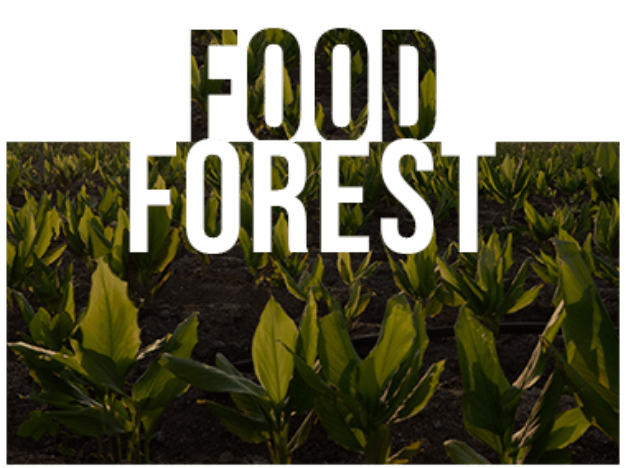

We are creating 250 to 300 acres of evolving forest ecosystems, which contain trees, shrubs, herbs, climbers and lianas, and ground covers, yielding nutritious delicious fruits and other food items. Each food forest is a self-sustaining living ecosystem. The forests will serve as educational demonstration sites, where everyone can learn innovate agro-forestry techniques and management through practical hands-on experience. In addition, the forests are renewable sources of biological diversity for reproduction, distribution, and conservation.
Large areas of Kanha are under cultivation. The holistic cultivation adopted at Kanha relies only on farmyard manure, compost, and jeevamrutham prepared out of cow urine and dung from the native cows. Organic pesticides, companion planting, and other natural pest control methods are also used. As of now, sorghum, jowar and foxtail millets, pigeon pea, horse gram and rice are cultivated at Kanha. There are many organic vegetable farms across the campus, and tomatoes, peas and beans, marrows and gourds are cultivated using trellises. There are orchards filled with many varieties of mango, custard apple, jamun, citrus, papaya, guava, sapota and mangosteen, as well as dates and olives.



The Yatra Garden is a place of silent contemplation and reflection, where you spend time in a series of beautiful gardens that have been designed in the form of a journey. This journey, the Yatra, represents the spiritual journey through the chakras of energy in the human system. As you walk from one habitat to the next, you will experience first-hand the various qualities of each of the chakras. In every garden you will find benches and sitting areas so that you may contemplate, meditate, read and absorb the various conditions of each stage on the journey.
This journey, from chakra 1 in the Heart to chakra 13, is also known as the march to freedom. And the evolution of our consciousness is the expansion that comes step by step, in incremental fashion, as we move from one chakra to the next, progressively shedding layer after layer of bondages around the soul. You are welcome to spend time in each of the chakra gardens, so as to imbibe the atmosphere of the place, and learn more about the qualities.
Follow Us
@kanhashantivanam